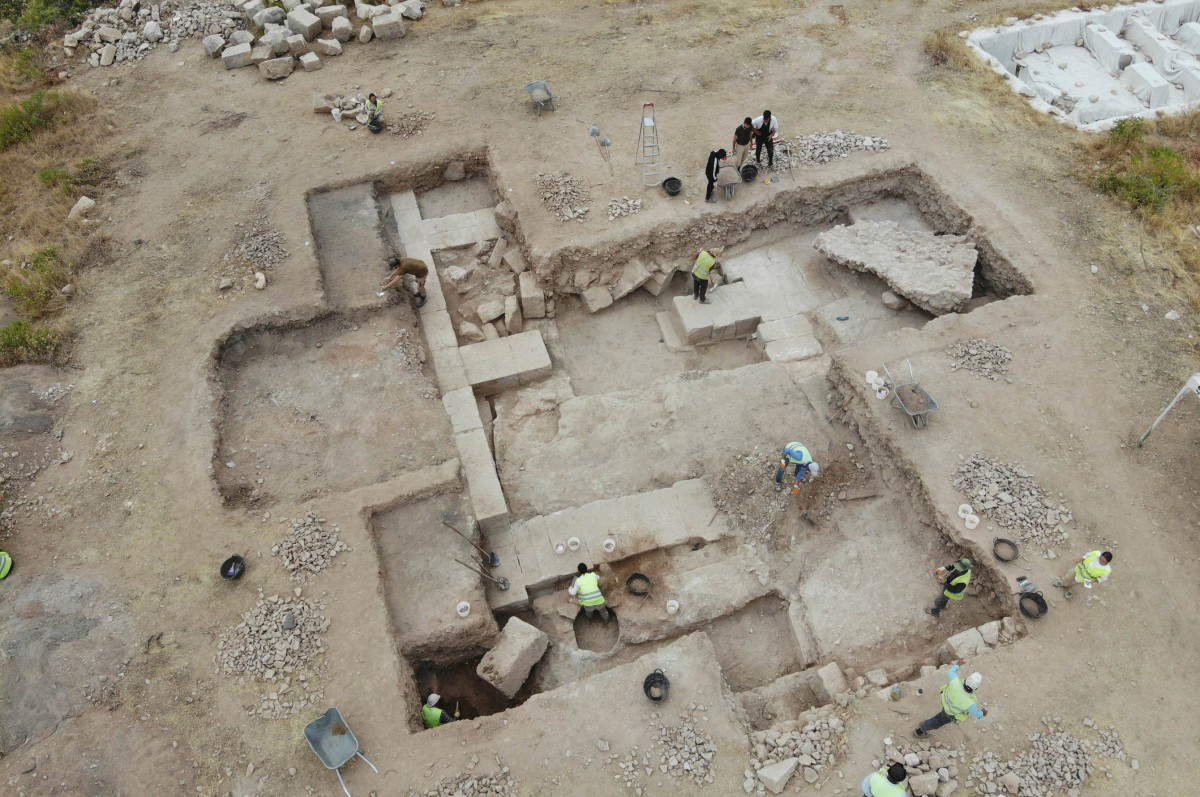Major archaeological discovery in Turkey, with Italian signature: the archaeological mission of theUniversity of Pisa, in collaboration with the University of Münster, in Doliche, in southeastern Turkey today, has unearthed the remains of a building that, thanks to the numerous terracotta seal impressions found by archaeologists, could be identified as theancient city archive, the place where papyrus and parchment documents were stored. These are the first results of the archaeological mission that the University of Pisa undertook last summer in collaboration with the German university in the ancient city of Doliche, founded under the successors of Alexander the Great (the Seleucids), and named like many other foundations in that area after the Greek city from which the settlers came: Doliche in Thessaly, near Mount Olympus.
“The site of ancient Doliche has been the subject of German investigations since the 1970s,” explains Margherita Facella, professor of Greek history in the University of Pisa and director of the Pisa mission. “Since 2015, an international team under the leadership of Professor Engelbert Winter has conducted prospecting and excavations, bringing to light the remains of several public buildings, including Roman baths. Next to these baths, traces of another building had been identified, now partially excavated by our archaeologists. This was a city archive, as revealed by the numerous terracotta seal impressions found here: more than 2,000 impressions (so-called bullae) were recovered from the area and subjected to cleaning and restoration wherever possible. The seal impressions clearly indicate that documents written on papyrus and parchment, which were later destroyed by fire, were kept here.”
Ancient documents were sealed with strings around which were placed small (0.5-2 cm) lumps of clay, often fragmented and difficult to recognize with the naked eye. Rings, decorated or inscribed, were stamped on this clay so that the documents could be sealed and prevented from being opened. Only in the event that an archive was destroyed by a serious fire could the seal impressions be preserved, as they were baked and thus hardened, while the documents perished in the fire. “The poleis of the Hellenistic and Roman East must certainly have possessed archives for the preservation of documents of an administrative and legal nature,” adds Professor Facella. “Their survival, however, is a very rare event, possible only in case of fire and subsequent abandonment of the building. In fact, while fire causes the destruction of the documents, it also allows the firing of the raw clay on which the seals are impressed, thus ensuring their survival. In 253 A.D., the Persian king Shapur I destroyed numerous cities in the Roman province of Syria, including Doliche, as a result of a bloody war between the Roman and Sasanian empires.”
A preliminary study of these materials reveals that they are both private seals and official city seals. “The images on the official city seals are directly related to the city,” explains Michael Blömer, professor at the University of Munster and visiting professor at the University of Pisa in 2023, who co-directed the excavations. “They usually show the most important deities like Jupiter Dolichenus, the main god of the city. The smaller private seal impressions show a wide range of images and symbols that say a lot about the cultural and religious heritage of Doliche’s inhabitants. Mythical figures and rare private portraits indicate a strong Greco-Roman influence on this region between East and West.” The study of these impressions is therefore quite essential to reconstruct not only the administrative reality of a city, but also its cultural and religious fabric.
“We are happy with the results of this first campaign, and we are grateful to Rector Riccardo Zucchi and Professor Federico Cantini, delegate for the promotion of research in the social sciences and humanities, for their financial support, and to all the administrative staff who have joined us in this work,” Professor Facella concludes. “In our view, it is also important that the project involves an area recently hit by a devastating earthquake, where the investment of resources is sure to help the population, which has found in the facilities of the archaeological mission a shelter and from the research team a concrete help. The enhancement of the archaeological heritage for tourism purposes would then undoubtedly be a significant contribution to the recovery of this region, which lives very much on internal and external tourism.”
Image: aerial view of the Doliche archive.
 |
| Important University of Pisa discovery in Turkey: ancient Doliche archive resurfaces |
Warning: the translation into English of the original Italian article was created using automatic tools. We undertake to review all articles, but we do not guarantee the total absence of inaccuracies in the translation due to the program. You can find the original by clicking on the ITA button. If you find any mistake,please contact us.